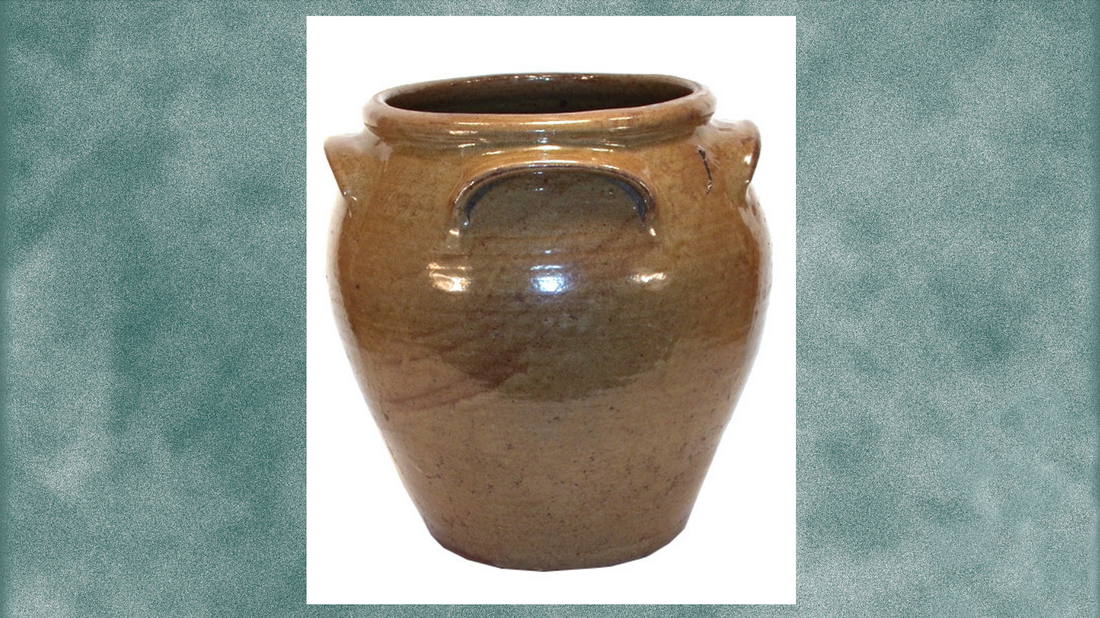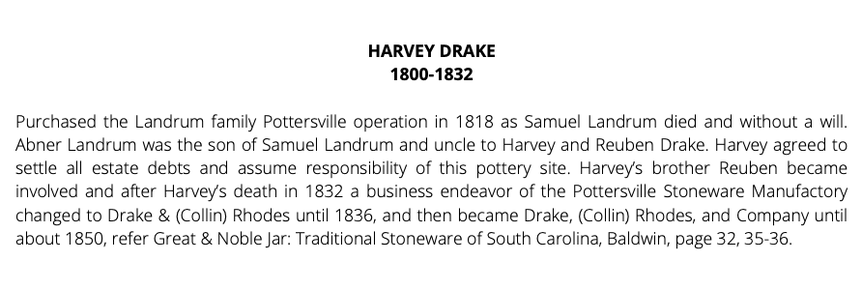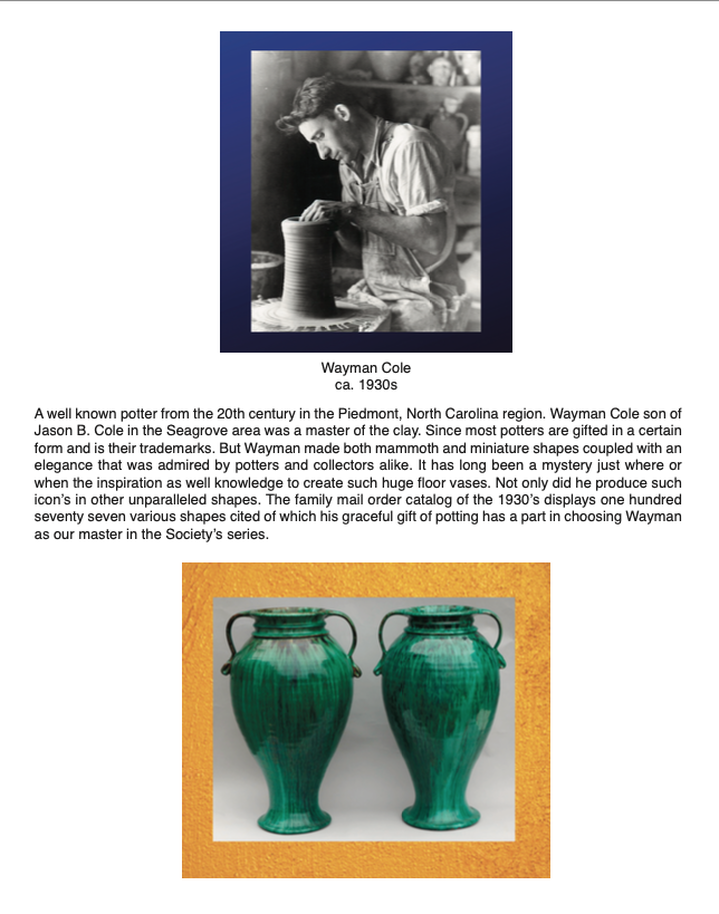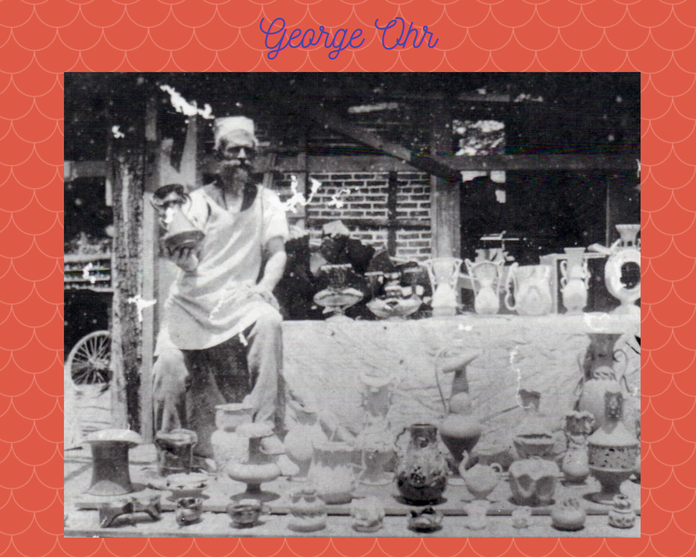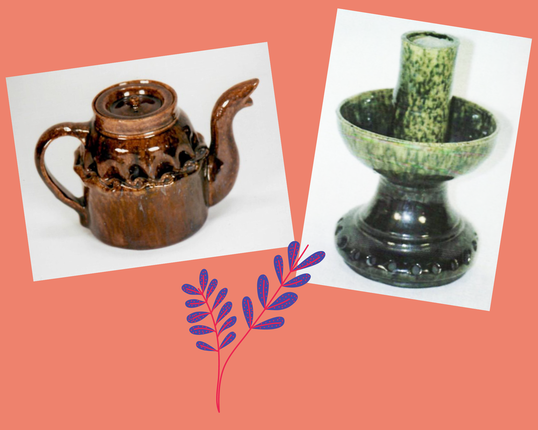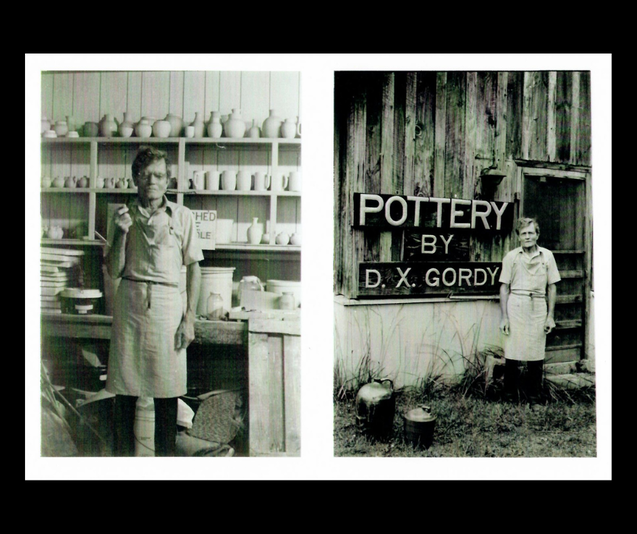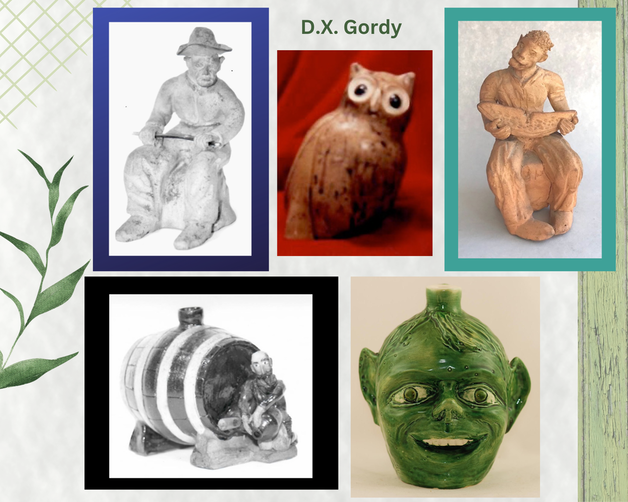“I am the greatest potter in the world” so said the master art potter from Biloxi, Mississippi. The United States Potters Association records a reply from George in 1905 inviting him to exhibit his wares then he stated, “I send you four pieces, but it is as easy to pass judgment on my productions from four pieces as it would be to take four lines from Shakespeare and guess the rest.” Yes George was a colorful and gifted artist. Born in 1819, at an early age began his illustrous career as a blacksmith, even though he state’s “about fourteen other professions.” In his early formulative years visiting “sixteen states” suggested he “sized up every potter and pottery” as his sights focused on clay. Returning to New Orleans by 1881, he is reputedly associated with Jacob Meyer from Newcomb College fame but this was a step towards his illustrious career.
Then came expositions, exhibits, but none ever measured up to George’s own vision of his works contributing goal. He professed himself to be unmatched to any other potters and even dared anyone try measuring up to his own work. Rightfully so his paper thin, contorted shapes to this day will never be challenged if so, the glaze certainly eliminates any “wanta be’s.” George’s results races ahead. His works or “mud baby’s” were for the most part never sold until they were discovered in the attic of his family auto repair shop warehouse during 1968 by James Carpenter when over seven thousand pieces were rescued. George’s fame was recognized over fifty years after his death now puts him where he and he only knew where his art belonged, at the top of the ceramic world. His pieces display what some have refereed to as “tortured or punished “ clay. Ohr’s masterful art form is the concept of a book dedicated to his life as portrayed wonderfully through the book titled The Mad Potter of Biloxi: The Art & Life Of George E. Ohr” by Clark, Ellison, and Hecht, Abbeville Press 1989. Marty Shack served as a special consultant on this book as it is phenomenal and a must for Ohr fans. What an artist, and visionary George Edger Ohr was.
Then came expositions, exhibits, but none ever measured up to George’s own vision of his works contributing goal. He professed himself to be unmatched to any other potters and even dared anyone try measuring up to his own work. Rightfully so his paper thin, contorted shapes to this day will never be challenged if so, the glaze certainly eliminates any “wanta be’s.” George’s results races ahead. His works or “mud baby’s” were for the most part never sold until they were discovered in the attic of his family auto repair shop warehouse during 1968 by James Carpenter when over seven thousand pieces were rescued. George’s fame was recognized over fifty years after his death now puts him where he and he only knew where his art belonged, at the top of the ceramic world. His pieces display what some have refereed to as “tortured or punished “ clay. Ohr’s masterful art form is the concept of a book dedicated to his life as portrayed wonderfully through the book titled The Mad Potter of Biloxi: The Art & Life Of George E. Ohr” by Clark, Ellison, and Hecht, Abbeville Press 1989. Marty Shack served as a special consultant on this book as it is phenomenal and a must for Ohr fans. What an artist, and visionary George Edger Ohr was.
D. X. Gordy: Georgia Master Potter
1913-1994
Dorris Xerxes came from a rich and extraordinary potting heritage. Son of W. T. B. Gordy and brother to William “Bill.” At this traditional 1900 jug shop countless potters worked and influenced the Gordy brothers. But by 1936 D.X. set up his own shop in Midway near Greenville. Deeply within his soul he possessed a talent beyond the churns, jugs, and pitchers he potted early in his life.
A non traditional spirited potter creating sculptural figurals for which his fame spawned. Aswell a genius in glaze formulations cultivating the rich natural minerals from the northwest region of the state. His free spirit could not be harnessed as he reached out to world ceramics of century’s past and combined shapes as well styles to corporate into his creations.
In the late 1980s I met D.X. and spent time at his shop and spoke many times on the phone about ash glaze. He commented that the “whole worlds an ash” just to compartmentalize his scope of ceramics. He was devoted to energize our potting heritage as he demonstrated at numerous venues and at his famed historical village in Westerville.
His fame placed him in the Worlds Fair in Knoxville, Tennessee during the 1982 event for demonstrations. D.X. was a legend and his remarkable contribution to our southern pottery heritage make for his inclusion in the Masters From The Past.
1913-1994
Dorris Xerxes came from a rich and extraordinary potting heritage. Son of W. T. B. Gordy and brother to William “Bill.” At this traditional 1900 jug shop countless potters worked and influenced the Gordy brothers. But by 1936 D.X. set up his own shop in Midway near Greenville. Deeply within his soul he possessed a talent beyond the churns, jugs, and pitchers he potted early in his life.
A non traditional spirited potter creating sculptural figurals for which his fame spawned. Aswell a genius in glaze formulations cultivating the rich natural minerals from the northwest region of the state. His free spirit could not be harnessed as he reached out to world ceramics of century’s past and combined shapes as well styles to corporate into his creations.
In the late 1980s I met D.X. and spent time at his shop and spoke many times on the phone about ash glaze. He commented that the “whole worlds an ash” just to compartmentalize his scope of ceramics. He was devoted to energize our potting heritage as he demonstrated at numerous venues and at his famed historical village in Westerville.
His fame placed him in the Worlds Fair in Knoxville, Tennessee during the 1982 event for demonstrations. D.X. was a legend and his remarkable contribution to our southern pottery heritage make for his inclusion in the Masters From The Past.


